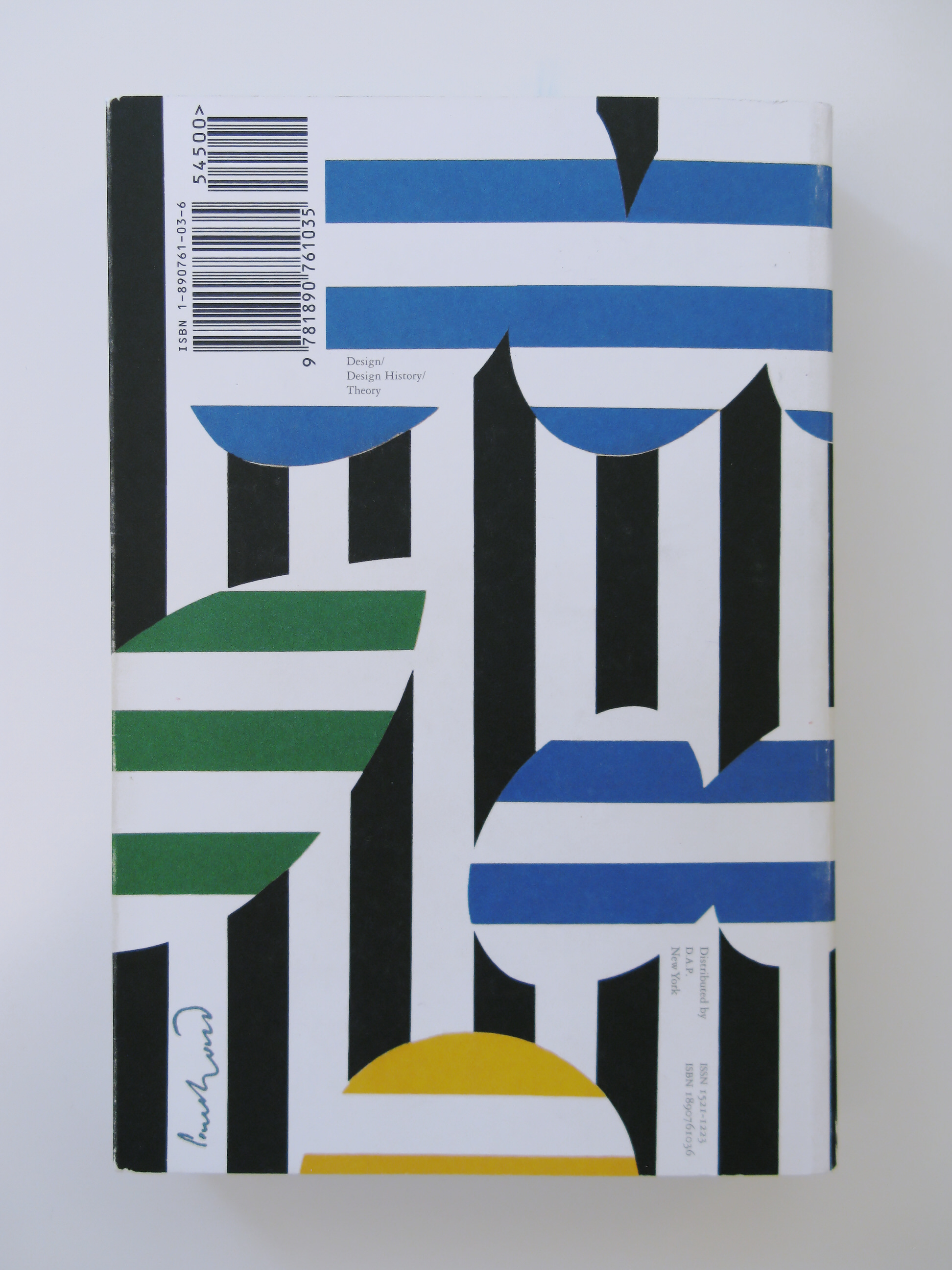Table Of Content

To view a photo in more detail or edit captions for photos you added, click the photo to open the photo viewer. Drag images here or select from your computer for Paul Rand memorial. Complement Thoughts on Design with Rand on the role of the imagination, then revisit the wonderful vintage picture-books he created with his then-wife Ann. The symbol is thus the common language between artist and spectator.
Leave a Flower
Notwithstanding his rich academic career in arts, Rand developed his graphic sense through self-education largely, as he voraciously read the European magazines, discovering the works of Cassandre and László Moholy-Nagy. Rand’s career spanned seven decades, and in that time his graphic designs, teaching (he joined the faculty of Yale University in 1956), and ideas broadly influenced several generations of American designers. His major writings include Thoughts on Design (1947), A Designer’s Art (1985), Design, Form, and Chaos (1993), and From Lascaux to Brooklyn (1996). IBM's new design mission - supported by Thomas Watson Jr., the son of the company's founder - visually transformed every aspect of the company, from electric typewriters to computers, advertising and architecture. The idea was to break with a conservative image and look towards the future, to illustrate IBM's renewed growth. Watson called on Eliot Noyes, a former colleague and architect who worked on curative design of the MoMa, among other things, to set up a team composed of Paul Rand (for graphics), Eero Saarinen (architecture) and Charles and Ray Eames (scenography, publications, videos).

Similar Businesses
During Post War America there was a huge fear of Communism but also of the persecution of apparent Communism. Companies as well as individuals wanted to avoid at all costs the possibility of being accused of having Communist sympathies. Like artists, who tended to avoid any suspicious figurative representation in art and moved more towards Abstract Expressionism, so too did big business want to be perceived as modern, global looking and "all American". In 1954, when Paul Rand decided that for him Madison Avenue was no longer a two-way street and he resigned from the Weintraub agency, he was cited as one of the ten best art directors by the Museum of Modern Art.
The brief life of this designer left an indelible mark on the history of graphic design.
For Rand it was not a case of providing a few options to the client. He would provide a single design, not in concept but in completion. It is worth noting that it was Rand's philosophy that the corporate logo should not be the entity responsible for devising the company ethos and meaning. Rather it should be the opposite and that a successful logo is one that reflects distinctly, memorably and clearly the meaning of the company, not the other way round. IBM's new identity is thus conceived as a global, moving, immediately recognizable work of art delivering a strong message. Charles Eames pointed out, "design is a plan for arranging elements in such a way as best to accomplish a particular purpose.".
Welcome to a Find a Grave Memorial Page
Thomas Watson Jr., who had inherited the reins of IBM from his father, was especially envious of Olivetti, the stylish Italian typewriter company. Watson hired Elliot Noyes, a designer and curator for the Museum of Modern Art, to overhaul IBM's design company-wide. In 1986 Paul Rand worked with Steve Jobs, who had left Apple to create his own computer company, NeXT. With limited financial brand and advertising budget, Jobs was looking for a "jewel" that would not require him to spend millions of dollars in advertising in order to connect, in the consumer's mind, the corporate logo with the company name.

Related Articles
The design is full of humor and metaphor that stops the reader in their tracks. Born Peretz Rosenbaum in Brooklyn 1914, Paul Rand found himself in the right place at the right time. Heavily influenced by new avant-garde ideas coming out of Europe, he realised the importance of visual communication when it came to commercial design. This is what I find inspiring in Paul Rand and is something that I try to incorporate in my own retro style designs and patterns.
Design to improve the general quality of life: exploring Paul Rand's IBM Graphic Standards Manual - It's Nice That
Design to improve the general quality of life: exploring Paul Rand's IBM Graphic Standards Manual.
Posted: Tue, 17 Apr 2018 07:00:00 GMT [source]
Porta Venezia Design District. Everythink is design - IFDM
Porta Venezia Design District. Everythink is design.
Posted: Thu, 28 Mar 2024 07:00:00 GMT [source]
Born in Brooklyn from Orthodox Jewish parents, Paul Rand started practicing his art as early as 3 when he recopied commercials in his parents' shop. Well not exactly recopying, because the Jewish religion represses figurative representation. In 1934, after taking lessons at New York's Pratt Institute and the Art Students League, Rand began his career by making illustrations for a union that sold them to newspapers and magazines for advertising and articles. The following year, yearning for more control over his work, Rand went solo, creating layouts and ads for a small group of clients. Rand's experience as an ad man---his uncanny skill for marrying art and commerce---was the foundation for the next big phase in his career. By the mid-1950s, American corporations were taking notice of their counterparts in Europe, who in the previous few decades had embraced a cleaner, more unified approach to branding.
If the visual at first sight did not appear appropriate to the message of the composition, this was secondary to what it represented as an abstraction of the element. He is able to analyze his problems, but his fantasy is boundless”. Across the industry, Rand helped initiate a crucial shift in creative power from copywriters to art directors.
Rand designed a modern logo with bright colours coming to life on stationery, brochures, packaging and buildings. It was a major break with the graphics that IBM had been displaying since its origins, post-World War I, and the repeated inconsistencies of their communication campaigns. After the war, from 1955 onwards, he distinguished himself with progressive graphic identities that served companies' interests. As an artistic director, he helped to transform the advertising industry by emphasizing the importance of graphic design and visuals over writing. He produced logos for large companies such as IBM, ABC, UPS, or Steve Jobs' NeXT, still legendary and almost unchanged to this day (except UPS).
He became the art director for Esquire magazine at the age of twenty-three, taught graphic design at Yale, and created logos for many major corporations, including IBM, the American Broadcasting Company, and UPS. He felt that the designer, like the artist, creates a unique piece of work and its reproduction for commercial use is no different than the reproduction of an artwork for a catalogue or book. Paul Rand (born Peretz Rosenbaum; August 15, 1914 – November 26, 1996) was an American art director and graphic designer. He was best known for his corporate logo designs, including the logos for IBM, UPS, Enron, Morningstar, Inc., Westinghouse, ABC, and NeXT. He was one of the first American commercial artists to embrace and practice the Swiss Style of graphic design. Rand was American and knew the importance of developing a clear design style that appealed to the new Post War American consumer.
Flowers added to the memorial appear on the bottom of the memorial or here on the Flowers tab. If the memorial includes GPS coordinates, simply click 'Show Map' to view the gravesite location within the cemetery. If no GPS coordinates are available, you can contribute by adding them if you know the precise location.
After studying in New York City, Rand worked as an art director for Esquire and Apparel Arts magazines from 1937 to 1941. As his work developed, Rand assimilated the philosophy and visual vocabulary of European art and design, in particular that of the Bauhaus, Constructivism, Cubism, De Stijl, and Futurism. Rand believed that lines, shapes, and colours could become message-conveying signs and symbols in visual communications while simultaneously functioning as elements in an artistic composition. For example, in a 1947 poster promoting the New York Subways Advertising Company, Rand’s arrangement of dots and concentric circles in vibrant colours becomes both an illustrative image and a dynamic composition.
For Rand, the essential elements to visual communication were simplicity and geometry. Remove all sense of nostalgia, sentimentality and figurative representation and get right back to the bare shapes and colors of the artwork. Like a lot of modernist designers of his time, Rand leant heavily on Swiss Style that allowed him visual clarity in his graphic design. For Rand the key to visual communication was to develop a "universal language" of design without weighing upon the need to communicate so much with words as with pictures.
In his magazine covers, since the late 1930s, Rand adopted both European modernism and American spirit and functionalism in his graphic style. His distinctive signature was praised by László Moholy-Nagy, a master of the Bauhaus and one of Europe's most famous modernist designers, who had recently immigrated to Chicago. Despite the fact that Rand earned his ultimate success by designing corporate logos, however, the source of his reputation is based on his initial work on page design. In mid 1930s he was requested by Apparel Arts (now GQ) magazine to develop the page layout for their anniversary issue. Later he was offered a job at another prestigious magazine, Esquire-Coronet, as an art director. After first refusal, he accepted the offer, managing the fashion pages for Esquire.

No comments:
Post a Comment